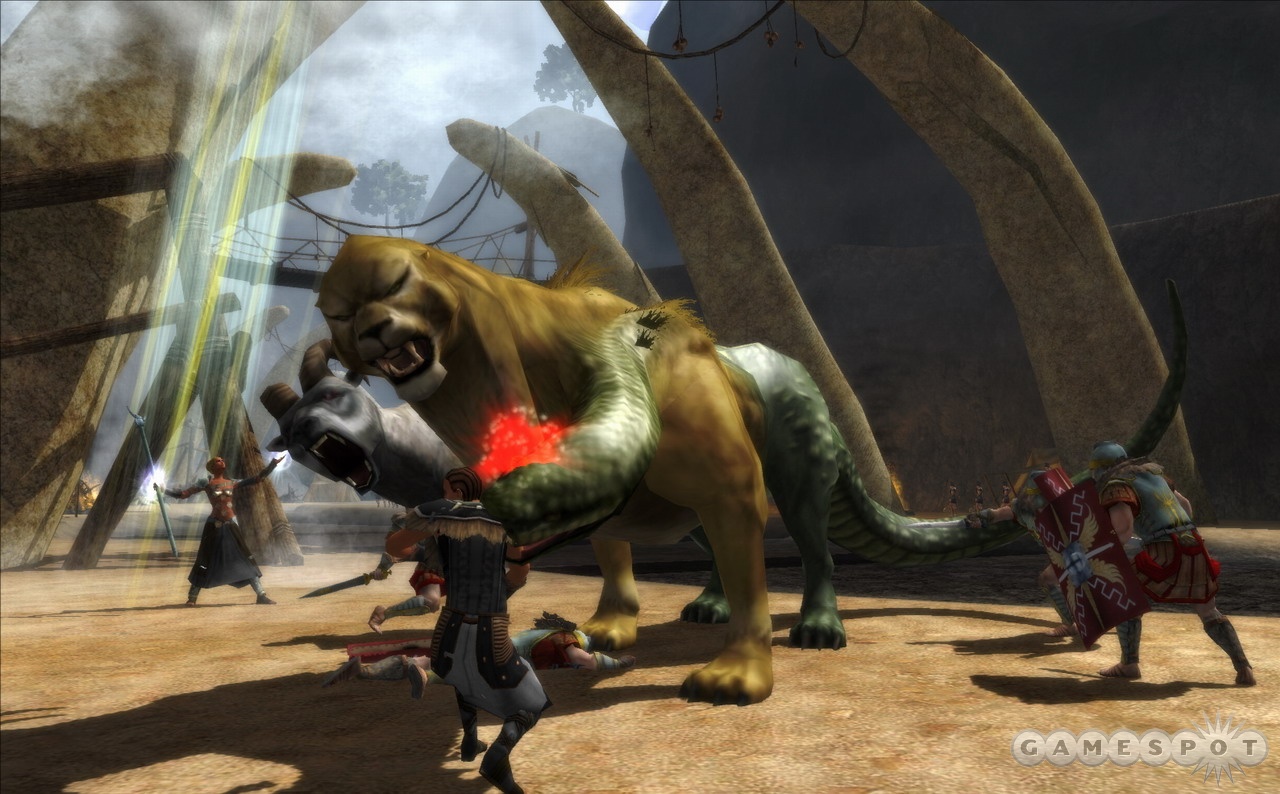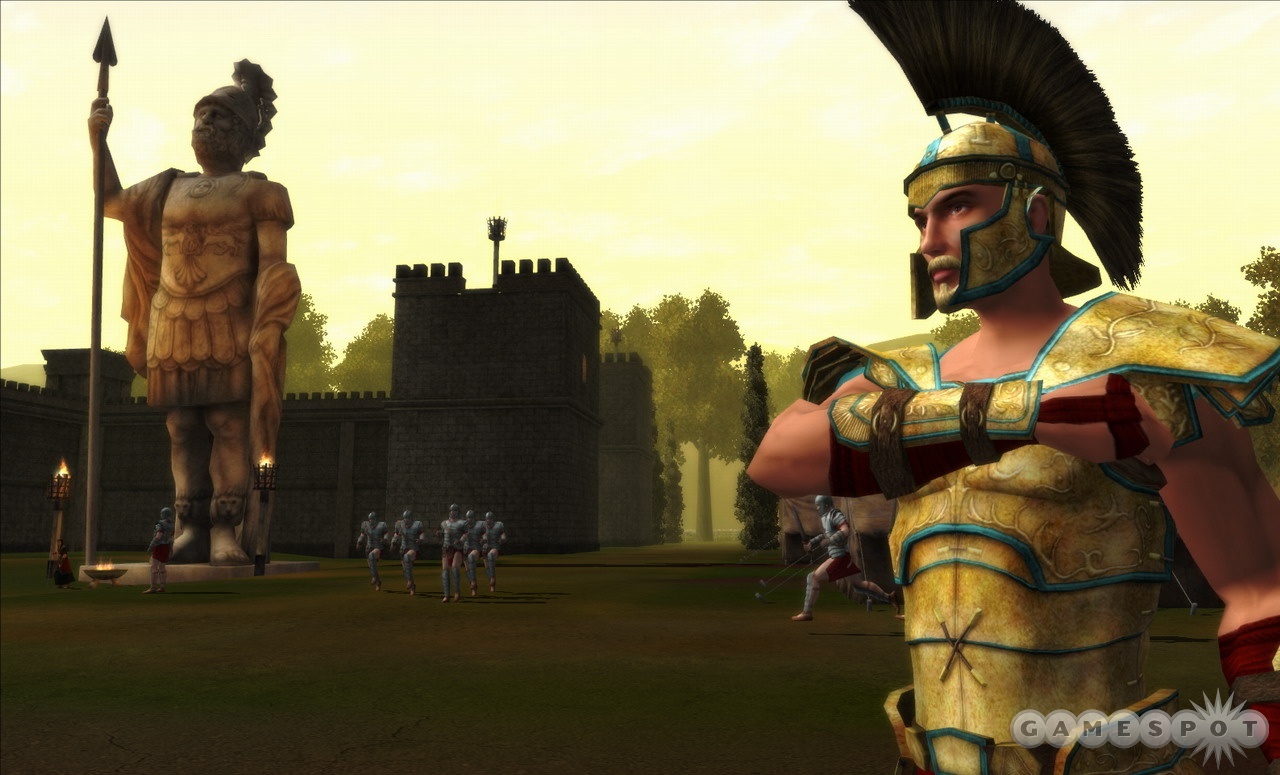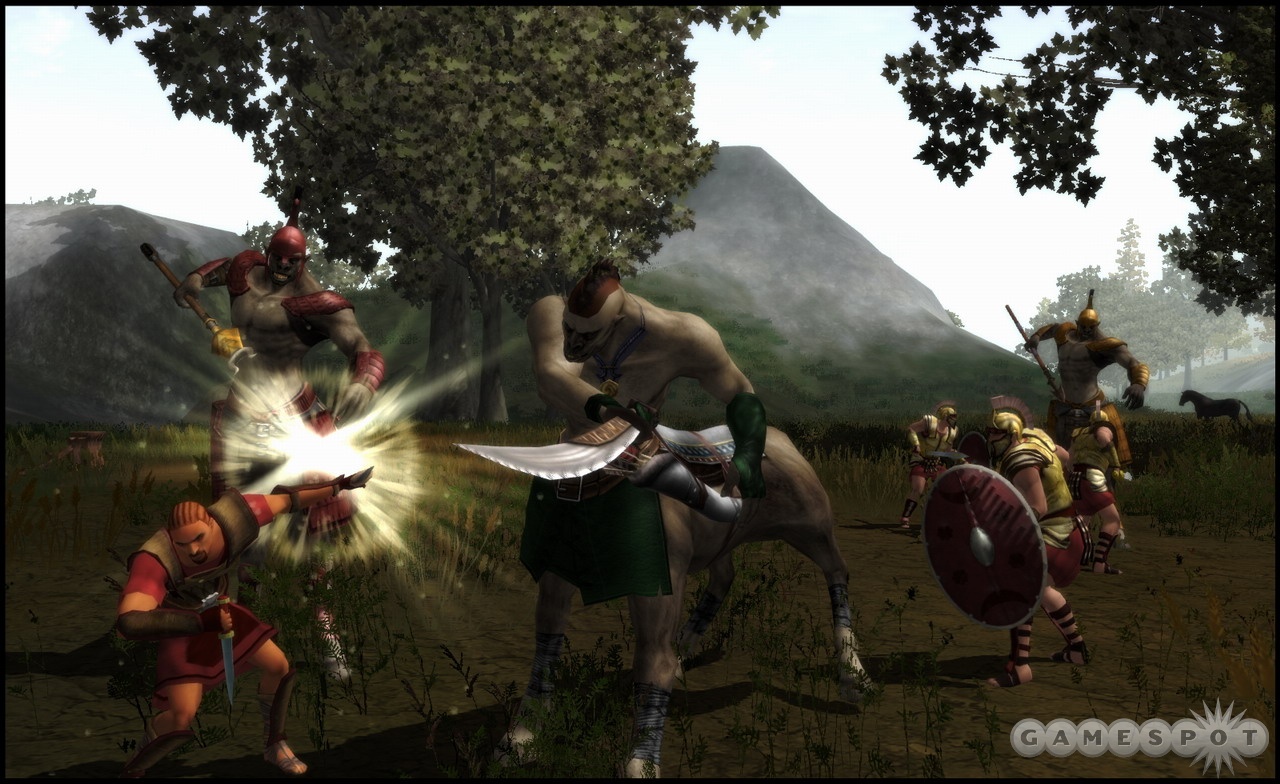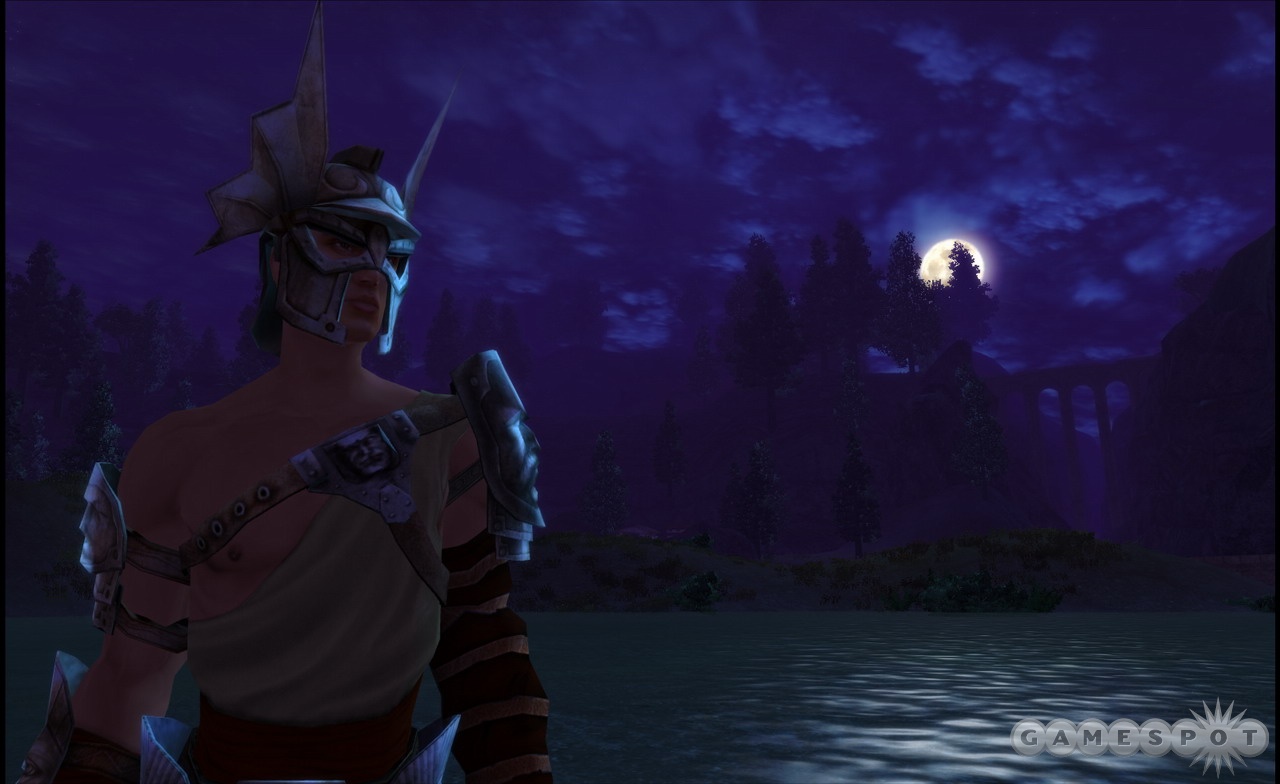Gods & Heroes: Rome Rising Updated Q&A - Classes, Feats, and More Combat
Design director Stieg Hedlund discusses the six main character classes in Gods & Heroes, and how each one brings a unique play style to the game.
If you feel that massively multiplayer role-playing games such as World of Warcraft have too many elves, dwarves, and other traditional fantasy creatures, you'll love that Gods & Heroes: Rome Rising from Sony Online Entertainment and Perpetual Entertainment promises a different sort of fantasy. Gods & Heroes taps into Roman mythology for its setting and inspiration, and you will create a character that explores a world full of centaurs, Cyclopes, and more. There are many interesting features to the game, not the least of which is the combat system that makes battles look and feel a lot more cinematic than in most massively multiplayer RPGs. We turned to design director Stieg Hedlund for more information on the combat and character classes in Gods & Heroes. The game is scheduled to launch later this year.
GameSpot: Gods & Heroes tries to be different from most other massively multiplayer online role-playing games when it comes to its player-versus-environment combat. Could you detail some of the differences for us?

Stieg Hedlund: Going into the project, we really felt that the sense of entertainment in massively multiplayer role-playing combat needed to be seriously amped up. Instead of following what other games in our category were doing, we took games such as Soul Calibur as our models and really went for it. We made a huge set of very different and very cool-looking combat animations for each of our classes and weapon types. So if you're playing a gladiator, you unleash all the brutal arena combat moves that can bring the coliseum crowds to their feet, while scouts are less showy but nonetheless deadly marksmen who rain destruction on their foes from a distance with an awesome selection of special shots.
GS: With the focus on the detailed combat animations, PVE seems to be a major part of Gods & Heroes. What do you see as the split between PVE and player-versus-player combat? Will the game be mostly PVE, or will PVP fans have their fun, as well?
SH: The shipping game will mainly be a PVE experience. We have some big near-term plans for arena PVP, and we'll be going after nation versus nation with our first expansion pack, when we add a second culture with its own territories, classes, gods, storylines.
The reason for this is that we really wanted to get the player-and-minion-squad combat experience exactly right and awesomely fun before running in too many other directions at the same time. Like I said, we have big plans, but as the saying goes, one cannot hold two watermelons in one hand.
GS: We've had a chance to play gladiators in the early part of the game, but how will the less combat-oriented classes, such as the priest and healer, cope in battle by themselves? Or will those classes need to hire minions to protect them?
SH: The game is really designed for people to have minions regardless of their class. If for some reason you were to play without them, things would tend to go very badly for you. Given that, each class is roughly equal in terms of its ability to be soloed, which I think is pretty cool. With that said, grouping will still have its own advantages and will also be encouraged, and some spaces in the game will be tuned for those specific types of experiences.
GS: We usually don't think of priests as a combat class. What sort of abilities do priests have when it comes to battle? Are they mainly a support class, or can they provide some fireworks of their own? Will priests worship a particular Roman god?
SH: It was definitely a part of our vision that characters from each class should be able to wreak their own brand of mayhem, priests included. Part of this is player choice, as there are those who are interested in the healing role. But priests can also learn feats related to cursing, which will allow you to dish out some pretty nasty spells, including awesome combinations. As an example, "Mark of the God," which allows you to designate an enemy to be sacrificed to your god, can be followed up with "Boreal Wave," which freezes and damages your foe, or even hand-to-hand combat moves like "Arm of the God."

Priests, as well as every character class in the game, can choose from two gods, selecting one to align with and worship above all of the others. This decision will have profound and lasting effects on your character: the storylines you follow through the game will change as your particular god will ask you, through his or her many messengers in the mortal and immortal realms, to perform certain tasks. As you complete these deity quests, your favor with your god will increase. You will be rewarded in more material ways, too, with awesome items as well as the ability to call upon god powers.
Each god reflects different aspects of the character type that can align with them. In the case of the priest, either Juno, keeper of the laws of Rome, or Pluto, lord of the netherworld, can be selected. As you can guess, the powers you stand to gain from these two gods are very different from each other.
Mystics and Nomads
GS: How about the mystic class? What sort of abilities are we looking at here? 
SH: The mystic uses arcane abilities to damage his enemies from a distance. Like our other classes, the mystic has two paths he can follow or mix abilities from: necromancy and elemental magic. Necromancy involves summoning dark beings and powers from the realms of shadow, while elemental magic offers more fire, lightning, and ice-related spells.
GS: What's the difference between the scout and the nomad classes? What role does the scout play, and what is the new nomad class all about? How do they each play out in battle, and what are some of their abilities?
SH: The scout class is an expert in ranged weapons. He can use a variety of these types of weapons coupled with his abilities to damage enemies from a distance. He can focus solely on feats that improve his prowess with sling, bow, or spear, or can train to increase his ability to deal with foes that have closed within range of hand-to-hand combat.
The nomad is an entirely new class we've just introduced. He's a hybrid class, and so he has a range of abilities that make him a very powerful solo class but also make him an asset to any group of heroes. The attunement-related abilities allow the nomad to heal his friends, but in some interesting ways that are different from the way the priest does things. An aggression focus allows a nomad to become a formidable close-fighting character as well.
GS: Then we have the two traditional "fighting" classes, the warrior and the gladiator. What's the difference between them? After all, don't they all use swords and wear armor? What are some of their abilities?
SH: The warrior is a guy who's able to take a beating and still stay on his feet. He's the guy everyone wants to stand behind when things get heavy in combat. The areas he can focus his abilities in are leadership, in which he gains further defensive and punishment capabilities, and warfare, centered around the ability to give back as good as he gets.
Gladiators are specialized weapon masters with trick-fighting techniques that devastate their enemies. Training in resilience feats will allow a gladiator to better withstand attacks, while flourishing arms feats takes him deeper into the use of exotic weapons like fighting gloves and nets.

GS: What sort of monsters will we encounter throughout Gods & Heroes? Were they all taken from ancient mythology, or did you also create some original creatures for the purposes of the game?
SH: There are so many wonderful, strange, and creepy creatures in myth that we didn't really need to go beyond them. We did, of course, do our own spin on the mythology, giving the creatures clearer and more interesting personalities and motivations, and making them visually badass.
GS: Thank you.
Got a news tip or want to contact us directly? Email news@gamespot.com
Join the conversation